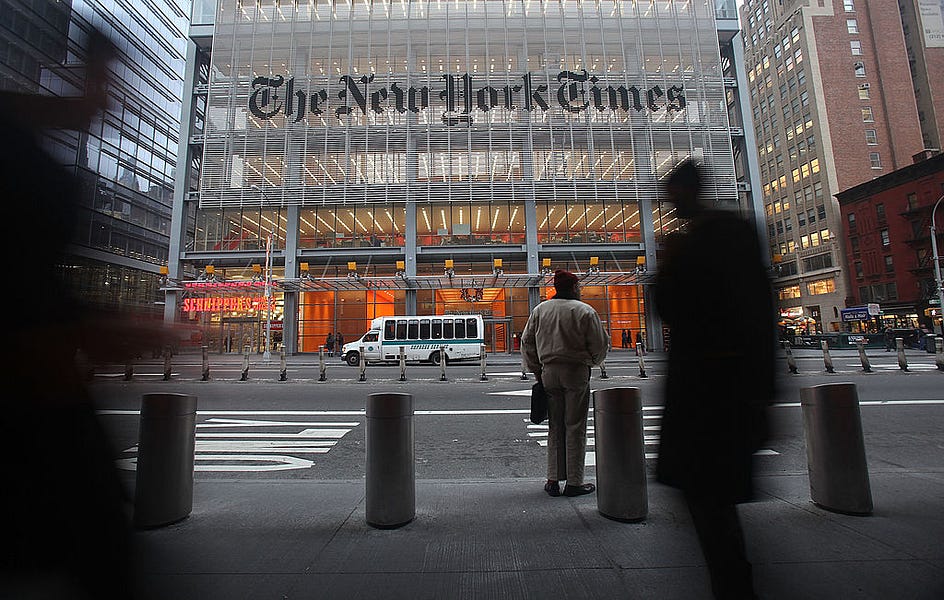Almost a year has passed since the New York Times first reported the police shooting of Jacob Blake in Kenosha, Wisconsin. During that time, the Times has struggled on more than one occasion to accurately characterize the events of that day, contradicting its own reporting or leaving out vital details. In a climate where actions and reactions of police officers in confrontations with black suspects are under intense scrutiny, accurate and complete details (including the brandishing of a weapon) are of utmost importance. The Times has been found wanting.
The most recent example appears in an article about tennis star Naomi Osaka and her involvement in protests against police violence (emphasis added):
And yet, as recently as 13 months ago, despite the growing fame that had already made her the world’s highest-paid female athlete, Osaka could still slip into a march in Minneapolis largely unnoticed with thousands of others to protest police violence against Black people.
Her activism intensified after Jacob Blake was shot in the back after exchanging words with the police in Kenosha, Wis.
By any measure, “exchanging words with the police” is a terribly generous way of describing Jacob Blake’s action that day last August. For a less flattering description, one need only to refer to this January 2021 article in the Times itself:
The prosecutor … said Mr. Blake had admitted to holding a knife—even describing switching it from one hand to another as he moved to open a car door—and that statements from officers and other witnesses indicated that Mr. Blake had turned toward an officer with the knife immediately before he was shot.
While the Times was quoting the prosecutor’s statement regarding Blake’s knife in that January article, Blake himself publicly admitted in a nationally televised interview on Good Morning America later that month that he indeed was holding a knife during the incident. Despite frequent previous Times coverage of the Blake case, including articles repeating Blake attorney Ben Crump’s false claims that had no knife, the Times has yet to report that Blake has publicly acknowledged the knife in the interview. (In an April article about another police shooting, the Times initially edited Ben Crump’s inaccurate Twitter claim about yet another “unarmed” suspect, only adding a reference after the omission was noticed.)
Times articles published since the GMA interview continue to use phrases such as “Mr. Blake, who the authorities say was armed with a knife,” although at least one states as fact that Blake was “holding a knife.” Ironically, a March 25 Times story about Blake’s lawsuit against the officer who shot him mentions the knife and uses a photo of Blake from the GMA interview, but does not mention the interview itself. Other Times articles simply leave out any reference to Blake’s knife or that he was armed at all.
Another rewrite of the Blake case appeared in the Times in April of this year. A Brooklyn artist created an art exhibit entitled “Unarmed” that includes a sports jersey with Blake’s name on it. The Times article includes a photo with the caption, “A man posed for a portrait in front of an Unarmed jersey that commemorated Jacob Blake, who was paralyzed after being shot by police in Kenosha, Wis. in August 2020.” Nothing in the article contradicts the idea that Blake was unarmed or mentions Blake’s admission regarding the knife.
Despite increased competition in recent decades, the New York Times is still widely considered the newspaper of record, not only in this country but around the world, and often drives coverage in other publications. Just last year, after the horrific police killing of George Floyd, The Dispatch documented how the Times turned the worst riots in decades (per its own reporting) into “isolated incidents of violence.” When the Old Grey Lady repeatedly mischaracterizes an event, society’s collective memory will be distorted to some extent.
A free press is indispensable for a well functioning democracy, but so is an honest and self-correcting press. If the Times continues to be as casual with the facts as it has been about the Blake case and the 2020 riots, either through misstatement or omission, it may someday lose its position on that pedestal, and its fall from grace will be well deserved.








Please note that we at The Dispatch hold ourselves, our work, and our commenters to a higher standard than other places on the internet. We welcome comments that foster genuine debate or discussion—including comments critical of us or our work—but responses that include ad hominem attacks on fellow Dispatch members or are intended to stoke fear and anger may be moderated.